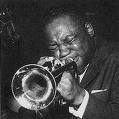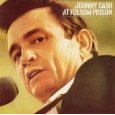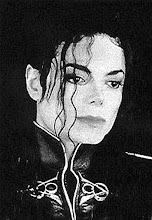
...and the full effects of my contributions haven't really been felt yet, nor have they even been fully realized by the industry and the public at-large.
It happened when I purchased my Sony HDR-SR5 hi-def video camera last fall. That's all it took.
Try to follow the logic here; this is the deal...
When I purchased that high definition camera, I was a bit of an idiot; in that I didn't realize it supported a new hi-def format called "AVCDH." This format, when the user goes through the process of creating hi-def discs to play home movies on, is only compatible with Blu-ray video
 players...
players......for those of you who don't know the context of what that means; Blu-ray has been in a format struggle, competing with HD DVD. Industry insiders and folks who pay a little bit of attention on the blogs (like me) know that one of the major catalysts in helping Blu-ray to win that format war in the last month was the consumer-driven sale of hi-def hard drive camcorders, which create the AVCDH files, which are only compatible with Blu-ray and not HD DVD.
So I was a dummy here on several levels...
- I bought the hi-def camera having no idea what AVCDH was or what it was compatible with. For all I know, it could have been compatible only with HD DVD, then I really would have been screwed.
- I bought it without a clue as to what software I was going to use to make home movies, or what precisely that entailed.
- I bought it not realizing that when I did figure out it was compatible with Blu-ray, that means I need to have a computer with a Blu-ray burner on it... ohhhh, now he gets it.
- ...and moreover, that means purchasing Blu-ray burnable discs (BD-Rs), which sell right now for about $15 a pop... yikes... might be riding the economics of that out for a few more months... YA THINK?!?
- Of course, none of this means anything unless I ACTUALLY OWN A BLU-RAY PLAYER, ALONG WITH A HI-DEF TELEVISION!!! HUH? YA THINK?!?
- While the knuckleheads at Best Buy weren't much help either, but in the end it was my fault for not doing my homework like I should have... I was just dazzle-blinded by the prospect of the hi-def camcorder.
So anyway, let's get back to how I helped to usher in the end of the long format war with my purchase...
Once again, try to follow my logic here...
The end of the format war, and with the consumer market running out to grab every Blu-ray machine in sight, seems to put the music industry in a special position.
Hey, WAKE UP!!! We're talking about the music industry now... you know, those guys who made you revamp your CD collection in the last 15 years with "remastered" CDs? Uh huh, we're talking 'bout those guys.
The music industry has been having an identity crisis in the last 5-10 years, as it can't decide how it wants to move into the world of better quality recordings... and it hasn't known what to do with the format known as the "CD," otherwise known as the compact disc... until now.
The CD will soon be obsolete. The higher quality picture definition of Blu-ray carries with it the capabilities of 5.1 and even 7.1 surround sound... and that also means it raises expectations not just for video, but also for audio. The music industry is going to need to start pushing its product into an arena where it can offer a quality of product that is comparable to where video is headed.
That means moving into an absolute market world (eventually) of 5.1 surround sound recordings... which means going to the DVD audio format and abandoning the CD, simply because the CD can't hold enough information on the disc. Blu-ray players are reverse compatible, meaning that they can also play DVDs and CDs... but NOT SACDs (super audio compact discs).
The SACD format has been another hi-fi offshoot from the CD, and while it presents uncompressed sound quality through a 5.1 system, it can be copied, especially the hybrid discs... and moreover, a Blu-ray player won't be able to play it and give it the 5.1 SS experience. Which means, in my opinion, that the SACD format will soon be abandoned, because folks who are on a budget with their audio-video setup at home aren't going to go out and purchase an additional disc player - in addition to their Blu-ray player - just so they can play SACDs.
Confused now? Uh, yeah.
So, my point again was that the camera purchase helped Blu-ray win the format war, and will push the music industry to adopt the DVD audio format so that folks will only need to purchase ONE player (because that's all they're willing to purchase) for their home systems to play it all at the quality they expect.
Allright, enough of that... good luck and good night. S































